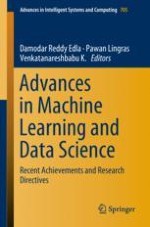The Volume of “Advances in Machine Learning and Data Science - Recent Achievements and Research Directives” constitutes the proceedings of First International Conference on Latest Advances in Machine Learning and Data Science (LAMDA 2017). The 37 regular papers presented in this volume were carefully reviewed and selected from 123 submissions.
These days we find many computer programs that exhibit various useful learning methods and commercial applications. Goal of machine learning is to develop computer programs that can learn from experience. Machine learning involves knowledge from various disciplines like, statistics, information theory, artificial intelligence, computational complexity, cognitive science and biology. For problems like handwriting recognition, algorithms that are based on machine learning out perform all other approaches. Both machine learning and data science are interrelated. Data science is an umbrella term to be used for techniques that clean data and extract useful information from data. In field of data science, machine learning algorithms are used frequently to identify valuable knowledge from commercial databases containing records of different industries, financial transactions, medical records, etc.
The main objective of this book is to provide an overview on latest advancements in the field of machine learning and data science, with solutions to problems in field of image, video, data and graph processing, pattern recognition, data structuring, data clustering, pattern mining, association rule based approaches, feature extraction techniques, neural networks, bio inspired learning and various machine learning algorithms.
